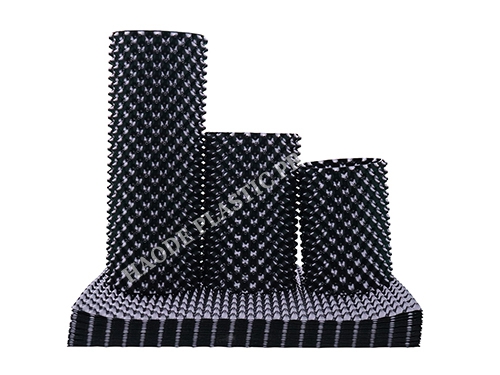Advantages and Effectiveness of Root Control Containers in Horticulture
2024-08-28 10:30:35
Root control containers have become a crucial tool for enhancing plant growth efficiency in horticulture. By optimizing the growing conditions for root systems, these containers significantly improve plant health and growth rate. This article will analyze the advantages of root control containers and their actual effects in horticulture, providing valuable insights for both amateur gardeners and professionals to make informed decisions.

1. Main Advantages of Root Control Containers
1.1 Optimizing Root Growth
The primary function of root control containers is to optimize root growth. By directing roots to grow in specific directions and preventing entanglement, these containers help roots distribute more evenly in the soil or growing medium. This optimized root structure improves nutrient and water absorption, ensuring that plants receive adequate resources.
1.2 Improving Soil Environment
Root control containers enhance the soil environment by providing excellent drainage and aeration. This helps prevent waterlogging and oxygen deficiency, reducing the risk of root diseases and rot, and improving overall plant health.
1.3 Increasing Water and Nutrient Absorption Efficiency
By optimizing root growth and soil conditions, root control containers enhance the efficiency of water and nutrient absorption. Well-distributed roots can better access nutrients in the soil, leading to faster plant growth and improved quality.
1.4 Reducing Transplant Stress
Root control containers minimize root damage during transplanting, reducing transplant stress. By protecting the integrity of the root system, these containers help plants adapt quickly to new environments, ensuring successful transplantation.
1.5 Resource Conservation
The use of root control containers improves resource utilization efficiency. In large-scale horticultural operations, these containers help reduce water and fertilizer waste, lowering operational costs and enhancing economic benefits.
2. Analysis of Actual Effects
2.1 Enhanced Plant Growth Speed
Studies show that plants using root control containers grow significantly faster than those without. By optimizing root conditions, plants can absorb nutrients and water more efficiently, accelerating their growth. For example, root control containers promote uniform root distribution, which speeds up overall plant growth.
2.2 Improved Plant Health
Root control containers effectively reduce the occurrence of root diseases and improve plant health. By providing proper drainage and aeration, these containers prevent waterlogging and oxygen deficiency, thus lowering the risk of root rot and disease. Plants using these containers demonstrate stronger disease resistance and better growth conditions.
2.3 Increased Yield and Quality
In commercial horticulture, root control containers can significantly boost crop yield and quality. Optimized root conditions foster healthy plant growth, resulting in higher overall yields and better-quality produce. For instance, vegetables and flowers grown in root control containers show increased yield and superior fruit or flower quality.
2.4 Enhanced Tolerance
Root control containers also improve plants' tolerance to adverse conditions. For example, in drought or high-temperature environments, these containers help maintain a healthy root structure, enhancing the plant's ability to adapt to challenging conditions. This improved tolerance ensures plants can thrive under various environmental stresses.
3. How to Choose the Right Root Control Container
3.1 Based on Plant Type
Different plants have varying root system requirements. Choose a root control container based on the plant’s root characteristics and growth needs. For deep-rooted plants, select deeper containers; for shallow-rooted plants, opt for shallower ones.
3.2 Consider Soil and Environmental Conditions
Select a root control container that matches the soil type and environmental conditions. For poorly draining soils, choose containers with excellent drainage features; for moist environments, select containers with good aeration.
3.3 Choose Suitable Materials and Designs
The material and design of root control containers significantly impact their performance. Choose containers that are durable and offer good aeration and drainage. Consider the environmental impact and cost of the materials, and select based on your specific horticultural needs.
3.4 Evaluate Cost-Effectiveness
When selecting root control containers, balance price and performance. While high-tech and eco-friendly containers may have higher upfront costs, they can offer better long-term results and economic benefits. Assess the cost-effectiveness of the containers and choose the best option for your needs.
Conclusion
Root control containers offer significant advantages in horticulture by optimizing root growth, improving soil conditions, increasing water and nutrient absorption efficiency, reducing transplant stress, and conserving resources. Understanding the actual effects and selection criteria of root control containers will help you make informed decisions in horticulture, leading to more efficient and healthier plant cultivation.

The CNC Seed Braiding Machine is a high-precision, fully automated agricultural equipment s...

It adopts electrical integration and can be started by pressing the fully automatic button ...

The XP750 seeder has stable performance, excellent product quality, simple and convenient o...

It adopts electrical integration and can be started by pressing the fully automatic button ...



